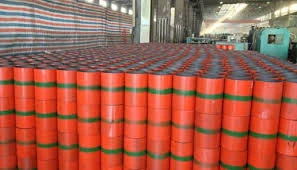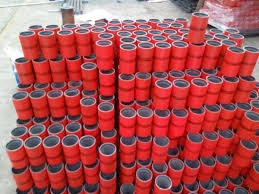2 月 . 18, 2025 07:47
Back to list
what is a pup joint
In the oil and gas industry, pup joints play an often overlooked yet crucial role, fundamentally impacting drilling and well operations. With decades of application, these components continue to be pivotal, largely due to their versatility, precise engineering, and critical role in ensuring operational continuity. This article delves deep into the realm of pup joints, leveraging my seasoned expertise to shed light on their importance, types, and key considerations in their selection and application.
A key aspect of pup joint selection concerns the environmental conditions and specific operational demands of the site. Understanding the specific pressures, temperatures, and chemical exposures expected plays a substantial role in making an informed decision. A thorough knowledge of the well configuration and any potential deviations from standard measurements (due to previous geological assessments) will guide the selection of the correct pup joint type and specifications. Consulting with experts and manufacturers can aid in tailoring solutions to fit project-specific needs. The reliability of pup joints owes much to rigorous quality control processes. Manufacturers employ advanced testing techniques, such as magnetic particle inspection, ultrasonic testing, and x-ray evaluations, to ensure structural integrity and performance capabilities align with industry standards like API or ISO certifications. These standards are critical, as they establish a universally recognized measure of reliability and safety. Proper maintenance and handling of pup joints are essential to extend their life and maintain operational safety. Regular inspections for wear, corrosion, and thread integrity are necessary to prevent unexpected failures. When storing pup joints, it's vital to avoid exposure to corrosive environments and apply protective measures, such as capping threads and coating surfaces, especially in harsh climates. In the fast-evolving landscape of oil and gas exploration, where precision and durability are paramount, pup joints remain an irreplaceable asset. They provide the versatility required to adapt to dynamic operational demands, maintain pipeline integrity, and facilitate efficient drilling and completion tasks. Their role, while sometimes overshadowed by larger components within the system, is fundamental to operational excellence and continuity. By understanding their technical specifications, operational application, and maintenance requirements, industry professionals can leverage pup joints to enhance productivity and maximize well efficiency. With an informed approach, the integration of pup joints into the drilling infrastructure can significantly impact both the immediate operation and long-term strategic goals within the oil and gas sector.


A key aspect of pup joint selection concerns the environmental conditions and specific operational demands of the site. Understanding the specific pressures, temperatures, and chemical exposures expected plays a substantial role in making an informed decision. A thorough knowledge of the well configuration and any potential deviations from standard measurements (due to previous geological assessments) will guide the selection of the correct pup joint type and specifications. Consulting with experts and manufacturers can aid in tailoring solutions to fit project-specific needs. The reliability of pup joints owes much to rigorous quality control processes. Manufacturers employ advanced testing techniques, such as magnetic particle inspection, ultrasonic testing, and x-ray evaluations, to ensure structural integrity and performance capabilities align with industry standards like API or ISO certifications. These standards are critical, as they establish a universally recognized measure of reliability and safety. Proper maintenance and handling of pup joints are essential to extend their life and maintain operational safety. Regular inspections for wear, corrosion, and thread integrity are necessary to prevent unexpected failures. When storing pup joints, it's vital to avoid exposure to corrosive environments and apply protective measures, such as capping threads and coating surfaces, especially in harsh climates. In the fast-evolving landscape of oil and gas exploration, where precision and durability are paramount, pup joints remain an irreplaceable asset. They provide the versatility required to adapt to dynamic operational demands, maintain pipeline integrity, and facilitate efficient drilling and completion tasks. Their role, while sometimes overshadowed by larger components within the system, is fundamental to operational excellence and continuity. By understanding their technical specifications, operational application, and maintenance requirements, industry professionals can leverage pup joints to enhance productivity and maximize well efficiency. With an informed approach, the integration of pup joints into the drilling infrastructure can significantly impact both the immediate operation and long-term strategic goals within the oil and gas sector.
Next:
Latest news
-
Unlock the Benefits of Pup Joints for Your OperationsNewsOct.31,2024
-
The Quality of Casing Couplings from ChinaNewsOct.31,2024
-
The Essential Role of Pup Joints in Drilling OperationsNewsOct.31,2024
-
The Benefits of Tubing Couplings for Your ProjectsNewsOct.31,2024
-
Enhance Your Drilling Operations with Tubing Pup JointsNewsOct.31,2024
-
Elevate Your Drilling Operations with Tubing CrossoversNewsOct.31,2024
Related Products







